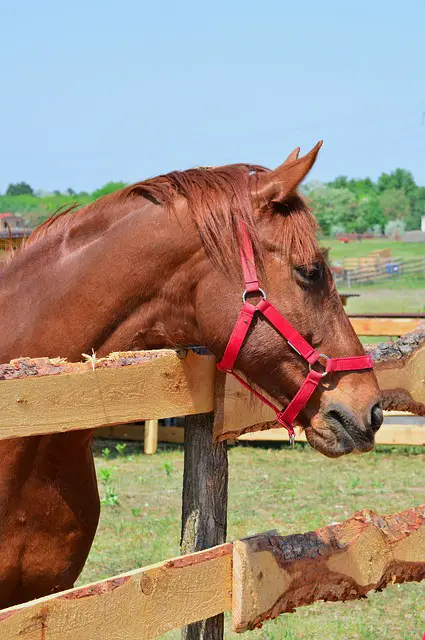Last Updated on March 15, 2022 by Allison Price
Recently, I saw an advertisement for a broodmare that stated it could not have any Caslicks.
This got me thinking about the negative stigma.
A mare that does not have a Caslick’s is rare in some parts of the world. What is a “Caslick” procedure? They are used when and why. Let’s get your anatomy on and talk about lady parts! The normal mare has three barriers that protect her uterus against infection from the environment. This is important because mares are at high risk for faecal contamination due to the fact that the anus is located directly above the vulva.

The vulval lips, which meet to form the outer seal of the reproductive tract, are the first barrier. The vulval lips are the only visible part of the mare’s reproductive system that we can see from outside. You can see the rest of the reproductive tract from the inside. The vestibulo-vaginal Sphincter is the second barrier. This membrane prevents urine backflow and dirt, bacteria, faeces, or air from entering the first barrier. This membrane can be removed to allow for breeding the mare or delivery of the foal. The cervix is the third and final barrier to the female uterus. The cervix, a dynamic structure, needs flexibility to allow passage of sperm during breeding season. It also has to be open for foals. The cervix is closed at all other times, especially during pregnancy. It serves as the last barrier to protect the foetus against environmental contaminants.
Protection Layers
The mare therefore has three layers of physical protection to protect her uterus from contamination. What happens if one of the barriers fails? The system is compromised.
The vulva, which is the most common barrier to fail is the vulva. The mare may inhale air through the vulva, causing a pneumovagina (sometimes called wind sucking). The air can cause irritation and inflammation in the vagina (vaginitis), and the cervix (cervicitis), which can spread to the uterus. If the mare is pregnant, irritation and inflammation can lead to endometritis (or a placentis). A uterine infection may develop when bacteria or fungal organisms are inhaled with the air. This can lead to poor reproduction in the mare, or even abortion.
It is important to identify poor vulvar conformation early in order to avoid problems. This problem is often more prevalent in older mares. Development can be caused by repeated foaling, injury of the perineal tissue, and a thin body condition. Things are not as tight as they once were. Even though she may not have had any issues in the past, it doesn’t mean she won’t need to address them in the future. A pneomovagina can also be developed in younger mares with a lighter body. This can cause poor performance and is often identified in race training.
Caslick’s procedure can often correct poor vulvar conformation. To prevent air and faeces aspiration, the edges of the vulval mouth are closed with sutures. The conformation of the mare will determine the length of the Caslick. To allow normal urination, the bottom 1/3rd (or third) of the vulva must remain open. The Caslick’s can be placed under local anaesthesia. Sutures can be removed within 14 days. A permanent seal will remain. This area can become contaminated and the Caslick’s may break down. Before you suture, your veterinarian will make sure that there are no holes in the Caslick.
You should be aware of the following things if your mare has Caslick’s:
- The mare will need one for her entire life after a Caslick’s is placed. With the Caslick’s, the normal architecture of the mare’s vulva has been altered. This is what you should do if you purchase a racing filly with a Caslick’s.
- Natural breeding requires that a Caslick’s be opened. A stallion might be able to breed a mare underneath a Caslick’s in certain cases. A mare can be artificially inseminated by either breeding her under the Caslick or through a speculum.
- Caslicks must be opened for foaling. Your veterinarian will usually have done an excellent job placing the Caslicks. This will be the strongest part the vulva. The foal of a mare will follow the path of least resistance when she foals. This does not mean that the Caslick’s should be opened. To prevent foaling accidents, it is very important that the Caslick’s be opened prior to the mare foals.
- After foaling, replace the Caslick’s. Even if your mare has a Caslick in place, but you don’t intend to breed her this year, her Caslick will need to be repaired. This will keep the uterus clean while she is away.
Caslicks are used to help restore the normal anatomy and prevent placentis or endometritis. This simple procedure can save you a lot of time and prevent the loss of a precious pregnancy. Instead of seeing this as a fault, consider it a proactive step towards protecting the mare’s reproductive ability.


